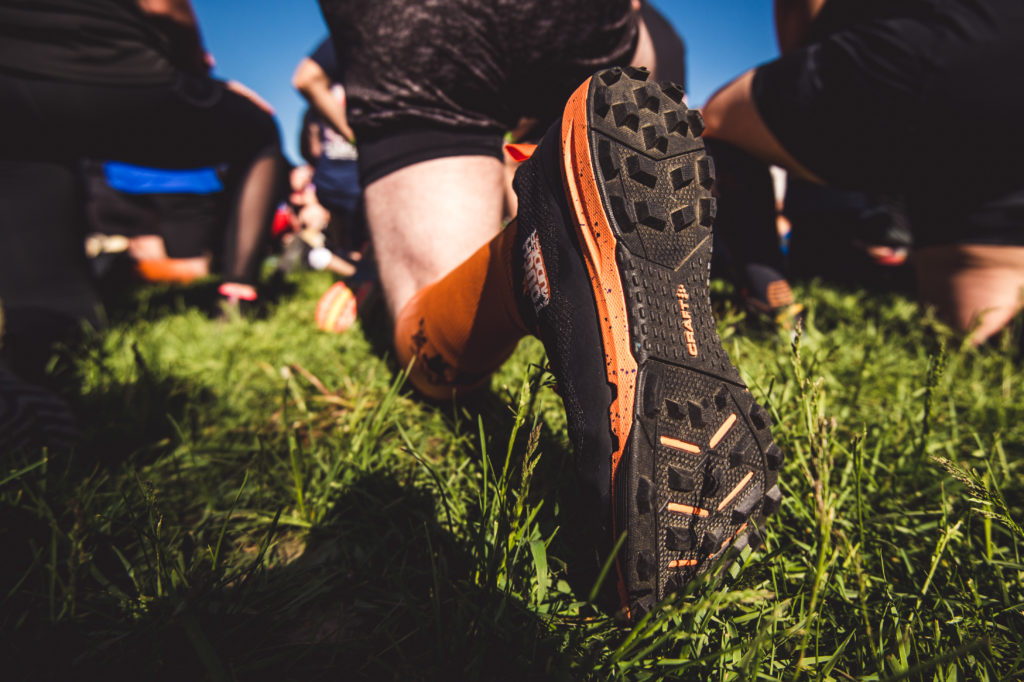Winter hibernation? Don’t even think about it, Mudder Nation. Running in cold weather is one of the best things you can do for yourself: you’ll get much-needed sunlight and fresh air, and you’ll avoid the mind-numbing drudgery of treadmill running. Plus, braving less-than-comfy conditions is great mental training for any Mudder athlete (and as anyone who braved World’s Toughest Mudder can tell you, race day doesn’t always bring sunshine and warm temps.)
But running in cold weather requires a little know-how and advance planning to stay motivated, safe, and—dare I say it—excited. Here are four tips for running in cold weather if you’re preparing to hit the road when the mercury drops.
1. The Right Gear Is Essential
As a running coach in the Northeast, I hear pretty regularly from people who say they don’t run in cold weather, or if they do, they stick to the treadmill. My first response is to ask, “do you ski?” The answer is usually yes. To that I say, “if you can ski in it, you can run in it—you just need the right gear, just like skiing.” Whether you have experience running in cold weather conditions or not, the first place to start is with the right gear. If you invest in proper winter running gear that keeps you warm and comfortable, you’ll be more inclined to train throughout the worst of the winter.
The basics should include: running tights/pants, a long sleeve base layer, a mid-weight top layer (with wind-proofing, if possible), a light water-resistant jacket, running gloves, and a hat. These six items can be layered and/or swapped out depending on the conditions. There are plenty of variations to choose from with each item depending on your style, cold tolerance, and price point. All of these items should be made of sweat-wicking technical fibers, (every athletic brand has their own), or non-itchy merino wool.
On the coldest, windiest, snowiest days I’ll wear all of these items at once: leg tights, long sleeve base layer top, running pants, a mid-weight top layer, and a running jacket. But here’s a good rule of thumb for dressing for a cold winter run: you should feel a little chilled when you step out the door. The reason? Your body will heat up as you run. By being just a little chilled at the start, you’ll warm up nicely and feel super comfortable as you’re running.
When it comes to footwear, your regular running shoes are probably fine. If the conditions are so bad with snow and ice that you need a special shoe with heavy gripping lugs, or Yaktrax cleats to put over your shoes for better grip, I personally believe you’re better off running indoors or taking a day off. Your foot and lower leg won’t be used to running with the added stress of such a firm, thick sole or heavy cleat and that could tweak your achilles, ankle, or cause plantar fasciitis. Your best bet is to go indoors in that case, unless you have snow and ice all winter long and you can slowly allow your lower leg to adjust that special footwear.
MORE: Winter Running Gear: 4 Essentials to Kick Cold to the Curb
2. Be Careful About Weather Conditions
Speaking of snow and ice, you have to be very careful if you decide to head out for a run in snowy, slick conditions. It’s not just the bad footing you need to look out for, (it isn’t always clear a foot strike is going to land safely, i.e., black ice, a snow-covered hole, etc.), but also the possibility of impaired vision from snow in your eyes. Stick to routes you know by heart and always err on the side of caution. This isn’t the time to explore a new trail.
Another thing to be hyperaware of is falling branches. In Central Park where I train, people have died this way. Heavy snow collects on an old or weakened branch, it snaps off, and crashes down hard on the ground. I always keep this in mind and stay alert when I run in Central Park on snowy days.
3. Keep Temps Top of Mind
Everyone has their own personal sensitivity and tolerance for cold air, so you should ultimately decide for yourself what’s best through trial and error—while taking into account any health considerations like poor blood circulation or cold/dry air induced asthma. However, with the right gear I described above, I believe people can run comfortably and safely in single-digit temperatures.
MORE: How to Beat the Winter Workout Blues
4. Don’t Forget About Hydration
It’s as simple as this: hydrating is JUST as important in the winter as it is in summer. The difference here is that when you’re running in cold weather, you may not have the same strong thirst as you would in summer and your clothes won’t be as soaked with sweat. But your body temperature is up and perspiration is leaving your body, quickly evaporating in the cold air. For this reason, you have to be mindful and proactive in making sure you hydrate.
Sean Fortune is a former NCAA distance coach and a New York City-based running coach. Find him at Central Park Coaching.



